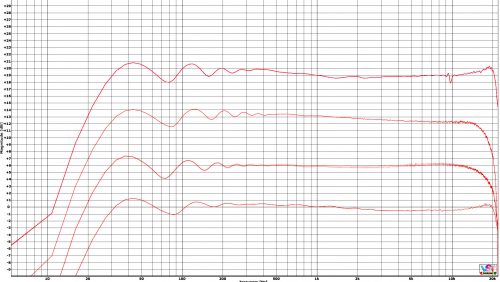This was a post made on acustica audio forum-
In short-
Kernal length just needs to cover the impulse ringing length, It’s really that simple.
A detailed explanation as to the factors of the length-
While In most cases the ringing length needs to be long it’s not true for a lot of my presets.
We basically load a impulse responses in to nebula when we open a preset. Each of those impulse responces can vary in length, this is why there is the subject of kern length.
As said on your site it’s the devs responsibility to adjust the kernal length to correct length.
I’ll explain atypical scenario involving one of my presets-
My band isolation eq’s have short kern lengths for mid bands and high bands, this might seem deciving, as we tend to think more is better. Band isolated lengths are under only 10ms kernal length or less. This is because lower frequency ringing is eliminated, Thus only giving us the ringing from the eq portion,that means actully more accuracy when stacking instances(it’s not like going through the hardware time and time again), Not sure if there are any other presets that do this so its pretty unheard of.. Most presets need longer lengths because the change in frequency at low Hz.
How curves effect ringing length-
I should say a lot of these things I learnt from working in a analog repair workshop for 4 years, a lot of the theory crosses over, we used to anaylze ringing lots to adjust a transformers performance (lowering ringing and pushing it’s effects down lower)it effects transient resoponce. The important bit The following is easily proved with any daw eq (don’t use linear phase as you want to see post ringing) by sending a impulse through the eq. You can get a impulse from here http://www.wavtones.com/functiongenerator.php, use pulse with 1 sample long for test. Look at the rendered result in a wav editor.
Ringing length is a consequence of how steep filtering has occurred and the frequency it’s at. For example a steep cutoff at 20hz(transformers or steep High pass filters) will create a very long Ring, so a longer kern length is needed to cover it.The opposite of that would be, high frequency with a shallow cut off(like a broad high shelf), giving a very short ring
So what happens if you don’t cover the ringing length, below some answers-
Firstly the effects of truncation are not usually the trait of the hardware
some things I made on truncation here
https://www.timpetherick.co.uk/new-approaches/
Point 4 regards to what happens if a kern length is not long enough
Truncation causes steep Fake cutoff so it can cause a modulation, incorrect frequency response and echo’s happen because it’s like creating another impulse response that’s delayed. The shorter the kern truncation for example 20ms truncation would cause a 20ms echo, the faster the echo effect, thus harder to hear.
On 37j because the roll off in the lows is quite high in hz this means the ringing is short, thus giving the opportunity to have a shorter Kern length. The 37j saturation presets only rely on tiny kern lengths as there function is not necessarily frequency related.
all I’ll say is you shouldnt need to change anything of mine, as it’s already tweaked to cover impulse riniging length, Of course some settings may change in the future ![]()
37j’s low end looks like it’s truncation but infact it’s tape gap modulation, the wobble on the low frequency should not be confused with truncation, just accurate sampling.

As you can see the filtering effect is quite high, meaning the ringing won’t be that long.
At some point I could simplify some of the points for the website but felt a more indepth explanation is needed as it’s not ever talked about really. I guess all i’d like to say is each release is setup to emulate the hardware best as possible, by tweaking anything you run the risk of putting something out of spec, this in itself can have huge conciquences on quality.

